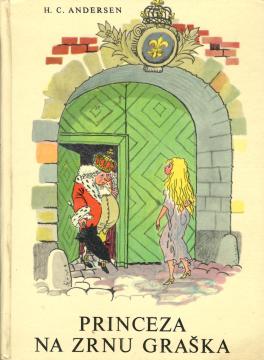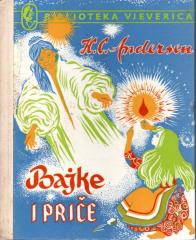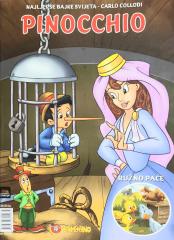
Princeza na zrnu graška
„Die Prinzessin auf der Erbse“ ist ein kurzes Märchen von Hans Christian Andersen, das erstmals 1835 veröffentlicht wurde und sich auf symbolische und humorvolle Weise mit der Frage nach wahrem Adel und Feingefühl befasst.
Die Geschichte beginnt mit einem jungen Prinzen, der eine echte Prinzessin heiraten möchte. Er reist auf der Suche durch die Welt, doch nirgends findet er eine Person, die all seinen Kriterien entspricht – immer fehlt etwas, oder sie ist nicht edel oder ehrlich genug.
In einer stürmischen Nacht klopft ein bis auf die Haut durchnässtes Mädchen an die Tür des königlichen Schlosses und behauptet, eine Prinzessin zu sein. Die Königin ist misstrauisch gegenüber ihrem Anspruch und beschließt, ihre Herkunft auf ungewöhnliche Weise zu beweisen. Er legte eine Erbse ans Fußende des Bettes und darauf zwanzig Matratzen und zwanzig Bettdecken.
Am Morgen beschwert sich das Mädchen, dass sie nicht schlafen konnte, weil sie etwas Hartes im Bett gespürt habe, wodurch sie blaue Flecken bekommen habe. Es war ein Beweis ihrer wahren Sensibilität – eine Eigenschaft, die dem Märchen zufolge nur eine wahre Prinzessin besitzt.
Der Prinz ist von der Entdeckung begeistert und beschließt, das Mädchen zu heiraten, da er endlich die wahre Prinzessin gefunden hat. Als Beweis für die Echtheit der Geschichte wird die Erbse im königlichen Museum aufbewahrt – so zumindest das Märchen.
Dieses Märchen ist zwar kurz, vermittelt aber eine starke Botschaft darüber, dass wahre Qualitäten nicht immer von außen erkennbar sind, sondern manchmal sorgfältig entdeckt werden müssen.
Jedan primerak je u ponudi





